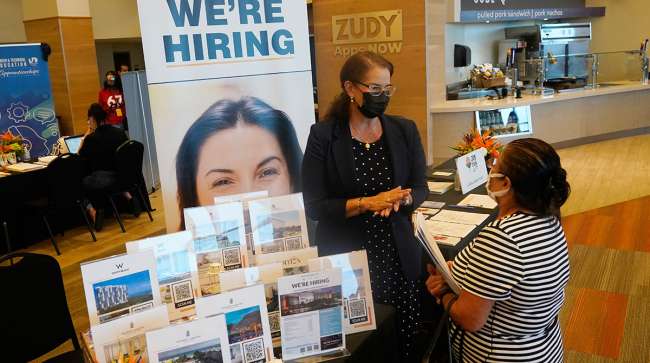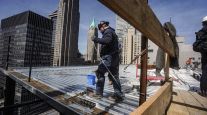Employers Add 467,000 Jobs in January

[Stay on top of transportation news: Get TTNews in your inbox.]
WASHINGTON — U.S. employers added a burst of 467,000 jobs in January despite a wave of omicron infections that sickened millions of workers, kept many consumers at home and left businesses from restaurants to manufacturers short-staffed.
The Labor Department’s report Feb. 4 also showed the unemployment rate ticked up from 3.9% to 4%. Estimated job growth for December also was revised much higher, from 199,000 to 510,000.
The strong hiring gain, which was unexpected, demonstrates the eagerness of many employers to hire even as the pandemic maintains its grip on the economy. Businesses appear to have seen the omicron wave as having, at most, a temporary impact on the economy and remain confident about longer-term growth.
Excuse me? How many jobs were added in January? 467,000? Huge upside surprise. Avg hr earnings jump. Fed clearly behind the curve. For-hire trucking added 8,000 to payrolls, which is a big number. Certainly seasonal adjustment factor impacts, but still a very strong report. — Bob Costello (@ATAEconBob) February 4, 2022
The still-high number of people who have remained on the sidelines of the workforce has exacerbated a labor shortage and led employers to raise pay to try to draw them back in.
The overall outlook for the job market remains bright, with openings near a record high, the pace of layoffs down and the unemployment rate already having reached a healthy level. The nation gained more jobs last year, adjusted for the size of the workforce, than in any year since 1978. The unemployment rate fell by nearly 3 percentage points — from 6.7% to 3.9% — the sharpest yearly decline on records. Much of that improvement represented a rebound from record job losses in 2020 that were driven by the pandemic recession.
Even so, the economy’s strong growth and hiring gains last year were accompanied by the highest inflation in four decades, magnified by brisk consumer spending on furniture, electronics, appliances and other goods and vast infusions of federal aid that has now largely expired.

Host Seth Clevenger speaks with Neil Shelton of GXO and Cathy Roberson of the Reverse Logistics Association about the supply chain. Hear a snippet above, and get the full program by going to RoadSigns.TTNews.com.
Snarled supply chains hampered the availability of many goods, especially new and used vehicles, forcing prices up sharply. Prices of food, energy and housing soared, too. High inflation has wiped out many Americans’ pay gains.
Omicron infections likely are slowing the economy in the January-March quarter, particularly compared with the rapid expansion in the final three months of 2021, when it grew at a robust 6.9% annual rate. Some analysts have forecast that growth will weaken to an annual rate as low as 1% in the first three months of this year.
One reason for the slowdown: Americans cut their spending in January as the spread of the coronavirus discouraged some people from eating out, traveling and going to movies and other entertainment venues.
Yet as omicron fades, there are signs that consumers are poised to spend again. Auto sales jumped in January after several months of declines. Carmakers have managed to slowly ramp up production. And Americans’ incomes rose at a solid pace last month, providing fuel for future spending.
Want more news? Listen to today's daily briefing below or go here for more info:




